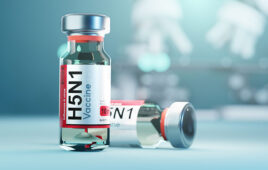The Janssen Pharmaceutical Companies of Johnson & Johnson announced results from the MERCURY PE study, which showed that people with low-risk pulmonary embolism (PE) treated with Xarelto (rivaroxaban) and discharged from the emergency department had significantly reduced time in the hospital and a median savings of $2,496 in per patient costs, compared to standard of care in-patient treatment.
Results from MERCURY PE, which evaluated the benefits of treating patients with low-risk PE with Xarelto and discharging them early from the emergency department to complete treatment at home, were published in Academic Emergency Medicine.
“Every year, U.S. health care systems spend more than 2 billion dollars to manage patients with pulmonary emboli,” said principal study investigator W. Frank Peacock, M.D., FACEP, FACC, associate chair and research director, emergency medicine, Baylor College of Medicine, Houston, TX. “By avoiding hospitalizations that are not clinically necessary and transitioning patients with low-risk PE to out-patient treatment with Xarelto, we’ve seen significant cost savings, which could help alleviate the burden on health care systems.”
Venous thromboembolism (VTE) includes deep vein thrombosis (DVT), a blood clot in a deep vein, and PE, a potentially life-threatening condition that occurs when a blood clot travels to the lung. Of the approximately 900,000 Americans who experience a VTE each yeari, more than 250,000 are diagnosed with PE in the emergency departmentii.
Hospitals across the United States have varying protocols for managing PE, but standard of care typically requires people to be admitted for treatment, which drives up costs and substantially increases hospital-acquired conditions and infectionsiii,iv. While people with more severe PE have higher mortality rates, the 30-day mortality rate of low-risk PE is less than one percentv.
MERCURY PE met its primary efficacy endpoint, with Xarelto leading to significantly reduced time in the hospital due to VTE or bleeding within 30 days after randomization compared with the standard of care (mean duration of 4.8 vs. 33.6 hours, respectively; 95% CI; p<0.0001).
The mean difference of length of stay between the two groups was 28.8 hours. Of note, there was no recurrence of VTE or VTE-related death or any significant differences in the bleeding-related hospitalizations or physician visits within 90 days from randomization in either group, though this outcome should be interpreted with caution, as the study was significantly underpowered to detect any such differences.
___________________________________________________________
References:
i Centers for Disease Control and Prevention. Venous thromboembolism (blood clots); Data and statistics. 2015. Available at: https://www.cdc.gov/ncbddd/dvt/data.html.
ii Schissler AJ, Rozenshtein A, Schluger NW, Einstein AJ. National trends in emergency room diagnosis of pulmonary embolism, 2001–2010: a cross-sectional study. Respiratory Research 2015;16:44.
iii Kandilov A. Analysis report: estimating the incremental costs of hospital-acquired conditions (HACs). Centers for Medicare and Medicaid Services website. Available at: https://www.cms.gov/Medicare/Medicare-Fee-for-Service-Payment/HospitalAcqCond/index.html [Last accessed 20 May 2016].
iv Wang L, Baser O, Wells P, Peacock WF, Coleman CI, Ferman GJ, Schein J, Crivera C. (2017) Benefit of early discharge among patients with low-risk pulmonary embolism. PLOS 316 ONE 12(10): e0185022. https://doi.org/10.1371/journal.pone.0185022 https://journals.plos.org/plosone/article?id=10.1371/journal.pone.0185022.
v Kahler ZP, Beam DM, Kline JA. Cost of Treating Venous Thromboembolism With Heparin and Warfarin Versus Home Treatment With Rivaroxaban. Acad Emerg Med 2015;22:796-802.
(Source: Janssen Pharmaceutical Companies of Johnson & Johnson)
Filed Under: Drug Discovery



